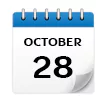6 May 2023 : Daily Current Affairs
No ban on screening of Kerala story – Kerala High Court.
Topic: GS2
Context:
- The Kerala High Court declined to stop the release or screening of the film “The Kerala Story” after a few writ petitions were filed seeking to suspend its screening.
- The court noted that the producer had included a disclaimer that the film was a fictionalised work and had been certified suitable for screening by the Central Board of Film Certification.
- The court also observed that the film contained nothing offensive to any particular community, and no allegations were made against any specific religion.
- The petitioners had alleged that the film contained derogatory remarks against one particular community leading to a violation of fundamental rights and had the potential to disrupt public order and morality.
Limitations on Fundamental Rights according to the Indian Constitution:
- While the Indian Constitution guarantees fundamental rights to its citizens, it also allows for certain restrictions on these rights in the interest of public order, morality, and national security. Some of the constraints of fundamental rights as per the Indian Constitution include the following:
- Sovereignty and Integrity of India: Freedom of speech and expression can be restricted in the interest of the sovereignty and integrity of India.
- Security of the State: Freedom of speech and expression can be limited in the interest of the security of the State, friendly relations with foreign States, public order, decency or morality, or concerning contempt of court, defamation or incitement to an offenc
- Public Order: The State can impose reasonable restrictions on the right to assemble peaceably and without arms and the right to freedom of movement in the interest of public order.
- Decency and Morality: The State can impose reasonable restrictions on the freedom of speech and expression, including freedom of the press, in the interest of decency and morality.
- Protection of Interests of Scheduled Tribes: The State can restrict the rights of citizens in certain areas to protect the interests of Scheduled Tribes.
- Protection of Interests of Minorities: The State can restrict the rights of citizens in certain areas to protect the interests of minorities.
- Reasonable Restrictions: Any restrictions imposed on fundamental rights must be reasonable and cannot be arbitrary or discriminatory.
More about the Central Board of Film Certification (CBFC)
- It is a statutory body under the Government of India’s Ministry of Information and Broadcasting.
- The board is responsible for – certifying films, trailers, and other related material before public release.
- The board comprises a chairperson and 25 other members appointed by the central government.
- Its responsibilities include certifying films, advising on cuts and modifications to the cinema, and monitoring compliance with the Cinematograph Act of 1952.
- The board uses various categories to rate films, including U (universal), UA (parental guidance for children under 12 years), A (restricted to adults), and S (restricted to specialised audiences).
- The board also issues certificates for films intended for television broadcast or distribution.
Automation initiatives of the Indian Army.
Topic: GS3 – security of Indian State.
Context:
- The Indian Army is implementing a new Battlefield Surveillance System (BSS) under Project Sanjay to provide a real-time, comprehensive operating picture for quick decision-making.
- The BSS aims to have surveillance centres for all field formations by December 2025, integrating thousands of sensors to provide an integrated surveillance picture to commanders and staff at all levels.
- The system will integrate data on the movements of India’s adversaries received from various sources across borders, including sensors, satellites, UAVs, and patrols.
- The BSS is among a series of automation projects rolled out to improve operational efficiency, enhance battlefield awareness, and provide functional efficiency for various administrative functions.
- Bharat Electronics Ltd. (BEL), Ghaziabad, is the project’s system integrator and has shown a rate of more than 95% success, meeting the Army’s aspirations and requirements.
- The Army Information and Decision Support System and the Situational Awareness Module for the Army are other decision support systems implemented to integrate inputs from all operational and managerial information systems.
- To enable these projects, the secure Network for Spectrum will provide an abundance of bandwidth to the services, and the Army is setting up captive data centres across the country.
Commerce Ministry looking to counter EU’s carbon tax plan.
Topic: GS3 – Indian economy and foreign trade
Context:
- The Commerce Ministry is exploring options to deal with the EU’s introduction of a Carbon Border Adjustment Mechanism (CBAM).
- The CBAM will have a monitoring mechanism for imports from non-green technology-using producers starting this October and a tax levy from January 2026.
- The move is likely to affect Indian metal and engineering products’ exports to the EU.
- The Commerce Department examines various options, including retaliatory tariff measures and a challenge at the World Trade Organisation.
- The Ministry of Steel and the MSME Ministry are working with the Commerce Department to create a mechanism to support MSMEs, the steel and aluminium industries.
What is Carbon Border Adjustment Mechanism (CBAM)?
- The Carbon Border Adjustment Mechanism (CBAM) is a proposed policy by the European Union (EU) that would require importers to pay for the carbon emissions associated with the production of certain goods, such as steel, cement, and aluminium, that are imported into the EU.
- The CBAM aims to prevent companies outside the EU from having an unfair advantage over those within the EU that are subject to stricter carbon emissions regulations.
- The policy would require importers to purchase carbon credits or pay a tax equivalent to the amount of emissions associated with the production of the goods they are importing.
- The CBAM is set to be introduced in a phased manner from 2023, starting with a monitoring mechanism and moving to a full tax system in 2026.
Potential Impact of CBAM on India:
- India is one of the largest exporters of iron and steel products to the EU, and the CBAM is likely to make Indian products more expensive, reducing their competitiveness in the European market. This could lead to a decline in India’s exports to the EU, which would have a negative impact on the country’s economy.
- The CBAM is also expected to increase compliance costs for Indian exporters, who will need to provide information on the carbon footprint of their products to avoid being subject to the tax. This could be a burden for small and medium-sized enterprises (SMEs), which may not have the resources to comply with the new regulations.
- Furthermore, the introduction of the CBAM could lead to trade tensions between India and the EU. The Indian government has expressed its concern about the proposal and has warned that it could challenge the measure at the World Trade Organisation (WTO). The EU has stated that the CBAM is in line with WTO rules, but there is a risk that the measure could be seen as protectionist by other countries.
- Overall, the CBAM is likely to have a significant impact on India’s exports to the EU, and the government will need to take steps to mitigate the effects of the tax on Indian businesses.
Measures that can be taken by India to combat the situation:
- Engage with the EU: India can engage with the EU to negotiate an exemption or a more favourable treatment for its exports.
- Retaliation: India can consider retaliatory measures, such as imposing tariffs on EU products to counter the impact of the CBAM. However, such measures can escalate trade tensions and may not be in the long-term interest of the economy.
- Improve energy efficiency and reduce emissions: India can focus on improving energy efficiency and reducing carbon emissions in its production processes to comply with global carbon reduction goals.
- Increase exports to other markets: India can diversify its export destinations and reduce its reliance on the EU market. This can also reduce the overall vulnerability of the Indian economy to external shocks.
- Domestic support measures: The Indian government can provide support to affected industries through measures such as tax breaks, subsidies, and other incentives to improve their competitiveness in the global market.
President’s rule should be imposed in Manipur, says Congress.
Topic: GS2 – Indian polity.
Context:
- The Congress has called for President’s rule in Manipur and urged the government to take immediate steps to restore peace in the State.
Procedure for application of President’s rule:
- Governor’s Report: In case of a failure of constitutional machinery in a state, the Governor of the State sends a report to the President of India, citing reasons for the failure.
- President’s Satisfaction: After receiving the report from the Governor, the President of India may either accept the report or seek more information from the Governor or the Council of Ministers of the State.
- Proclamation: If the President is satisfied that the situation in the State is grave, he/she issues a proclamation imposing President’s rule in the State under Article 356 of the Constitution of India.
- Parliament Approval: The proclamation of President’s rule must be approved by both houses of Parliament within two months from the date of its issue.
- Duration: President’s rule can be imposed for a maximum period of six months. However, it can be extended for a further period with the approval of the Parliament, but the extension cannot exceed a period of one year.
- Revocation: The President can revoke the proclamation of President’s rule at any time, either on the advice of the Council of Ministers or on his/her own discretion.
- Restoration of State Government: After the revocation of President’s rule, the state government is restored, and the powers and functions of the state legislature and the Council of Ministers are also restored.
Situations in which President’s rule can be imposed:
- In India, President’s rule can be imposed in a state under the following circumstances:
- If the state government is unable to function according to the Constitution
- If the state legislative assembly is unable to elect a leader as the chief minister
- If the law and order situation in the State is deemed to be deteriorating and the state government is unable to contain it
- If a situation has arisen where the Governor of the State is unable to carry out his/her duties in accordance with the Constitution
- If a state has failed to comply with any directions issued by the Union Government.
- Under Article 356 of the Indian Constitution, the President can assume direct control of the State’s administration and governance, bypassing the elected government, and can run the State with the help of an appointed governor until the situation is deemed to be normal again.
Implications of the president’s rule:
- Central control: When President’s rule is imposed, the State’s elected government is dismissed, and the State comes under the direct control of the Central government. The Governor of the State becomes the representative of the President and exercises executive powers on behalf of the Central government.
- Suspension of the State Assembly: The State Assembly is either dissolved or its functioning is suspended until the State comes out of the President’s rule. The State’s elected representatives lose their powers to legislate, and the State budget is also not passed during this period.
- Bureaucratic reshuffle: The Central Government may reshuffle the State’s bureaucracy, replacing officers and officials with those considered loyal to it. This can impact the continuity of governance and policymaking.
- Curtailment of civil liberties: The imposition of the President’s rule often leads to curtailment of civil liberties and human rights violations as the Central government has greater control over the State’s administration and security apparatus.
- Political implications: The imposition of the President’s rule can have significant political implications. It can lead to a loss of confidence in the government and may affect the ruling party’s electoral prospects. It can also fuel political instability and create mistrust among the people towards the Central government.
Covid pandemic is no longer an emergency – WHO.
Topic: GS3 – International organizations, health emergency.
Context:
- The World Health Organisation announced that COVID-19 is no longer categorised as a global emergency, signifying a symbolic conclusion to the catastrophic coronavirus pandemic that resulted in unprecedented lockdowns, disrupted economies, and caused the death of millions of individuals across the world.
Criteria for declaring global emergency by WHO:
- According to the World Health Organisation (WHO), a global emergency is declared when an extraordinary event poses a risk to public health on an international scale and requires a coordinated response.
- The decision is based on factors such as the potential for international spread, the severity of the disease, and the public health impact of the event.
- The declaration of a global emergency mobilises resources and global coordination to help contain the spread of the disease and mitigate its impact.
More about World Health Organisation (WHO):
- The World Health Organisation (WHO) is a specialised agency of the United Nations responsible for international public health.
- It was established on April 7, 1948, headquartered in Geneva, Switzerland.
- The WHO works to promote health and well-being, prevent and control diseases, and provide leadership and assistance on matters critical to global health.
- The WHO operates in accordance with its Constitution, which was signed by all member countries and defines the organisation’s mandate, governance, and powers.
- The organisation is funded by member countries, assessed according to their ability to pay and other factors such as population and gross national product.
- The WHO’s work includes the coordination of global responses to epidemics and pandemics, the development and implementation of health policies and guidelines, and the provision of technical assistance and support to countries and communities.
- The organisation also conducts research, monitors health trends and risks, and advocates for health and human rights.







